Text
I moved my tumblr over to eastwestmedicine.tumblr.com so it can be its own primary bloggo
1 note
·
View note
Quote
I teach a class called ‘Decolonize Your Diet,’ and I talk about the Spaniards arriving in Mesoamerica. One of the first things they tried to change—in addition to religion— was the way people ate. They introduced wheat and tried to make eating bread something that was seen as more valuable than eating corn. They outlawed amaranth, and in South America they outlawed quinoa. I tell my students to think about how the dominant powers are invested in controlling what their subjects eat, and then to take that concept from the 1500s to our contemporary era and ask themselves, ‘What are the powers that be wanting us to eat right now? Where are all the food subsidies going? How is that influencing what we’re eating? Who’s benefiting and who’s suffering because of that?’ For students, drawing those connections is really powerful, and it gives them a tangible way to analyze relations of power.
Dr. Catrióna Esquibel (via catherineaddington)
42K notes
·
View notes
Text
if representation doesn’t matter to you it’s probably because you’re already represented
130K notes
·
View notes
Quote
People of Asian descent become the model minority when they are depicted to do better than other racial minority groups, whereas they become the yellow peril when they are described to outdo White Americans. On one hand, Asian Americans as the yellow peril embody ‘‘foreignness’’ and ‘‘masculinity’’ that threaten U.S identity as a White, Christian nation; on the other hand, Asian Americans who make efforts to succeed silently and diligently— without demanding or protesting anything —symbolize ‘‘the model minority’’ and ‘‘docility’’ or ‘‘femininity’’ and confirm colorblind ideology. Considering Lee (1999) and Okihiro’s (1994) arguments, it is possible to think that the construction of the model minority stereotype is tied to creating a less threatening face of the yellow peril.
Stereotyping Asian Americans: The Dialectic of the Model Minority and the Yellow Peril, Yuko Kawai (via eternal-dannation)
8K notes
·
View notes
Quote
This assumption that the human body can everywhere be normalized began to take form when biomedical technologies were used, often on an experimental basis, by the colonial empires of the 19th century on colonized peoples. Today, the global reach of biomedical technologies is undeniable and, together with public health, is the prime means by which governments and developmental agencies aspire to ameliorate disease and disability everywhere. An unexamined assumption about the uniformity of human bodies continues to inform most biomedical practice.
Margaret Lock and Vinh-Kim Nguyen, 2010. An Anthropology of Biomedicine.
8 notes
·
View notes
Text
when ur moc (mom of color) takes u to a foc (function of color) and u just have to sit there and listen to all the aunties goc (gossip of color)
41K notes
·
View notes
Photo
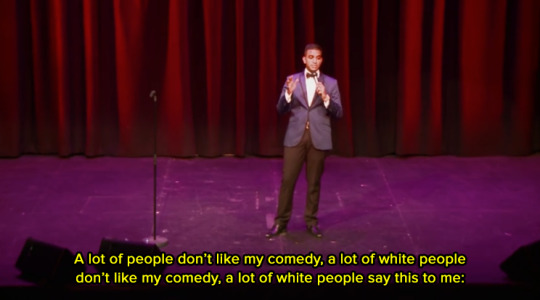
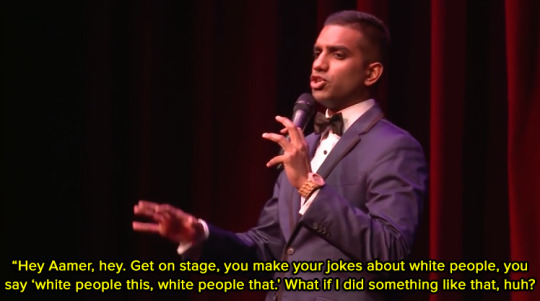

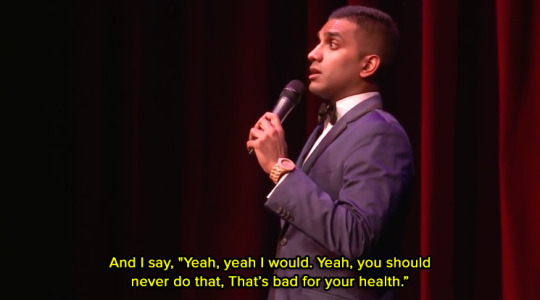
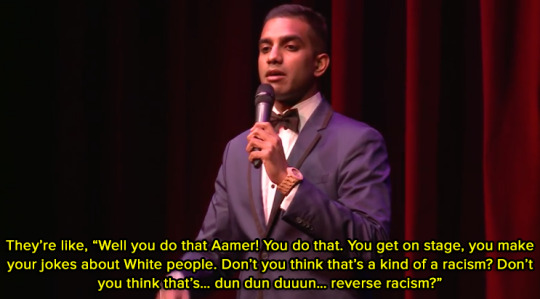
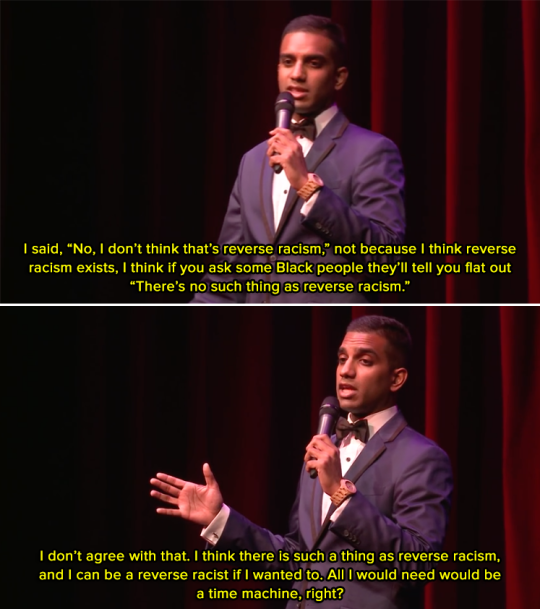

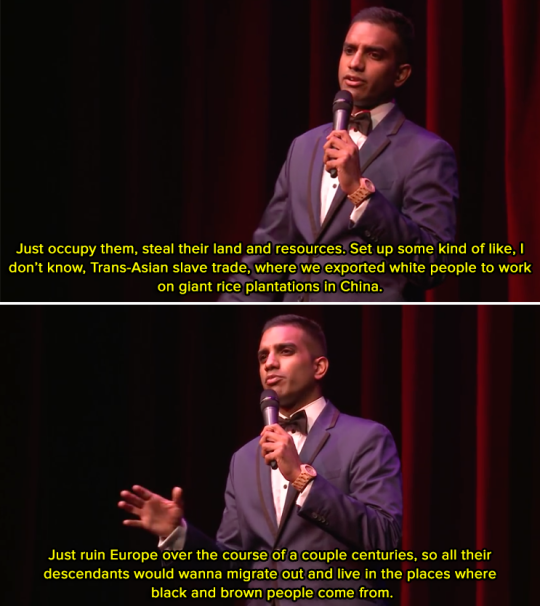
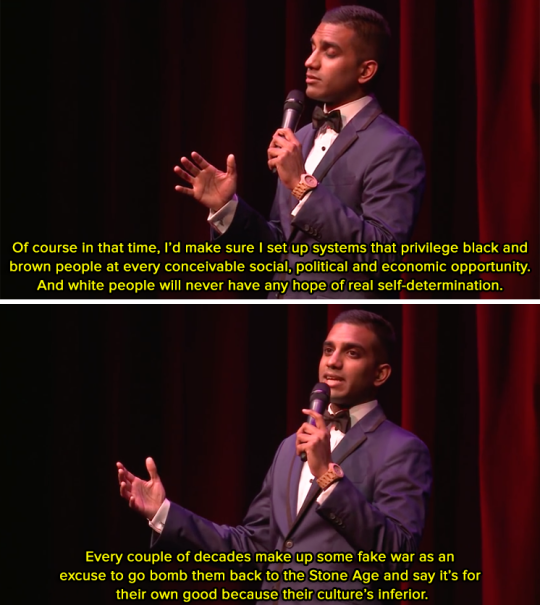
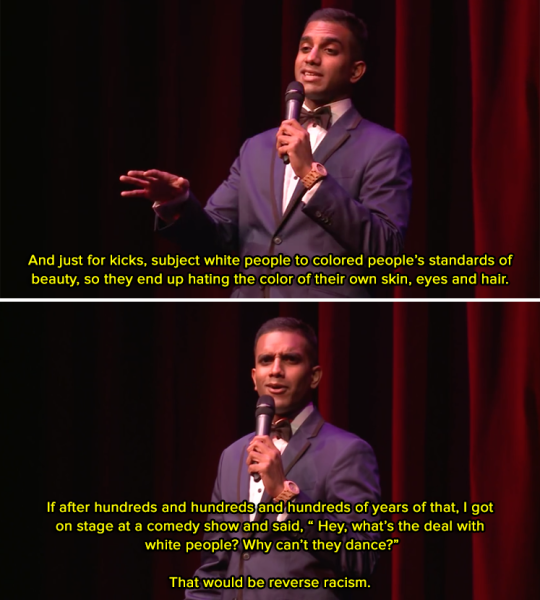
Watch: Comedian Aamer Rahman’s explainer of reverse racism is still requisite viewing.
Especially considering the astounding number of Americans who think “reverse racism” is a real problem.
135K notes
·
View notes
Photo

192 notes
·
View notes
Photo

A selection of reads centered around feminism, written by women of color for women of color.
“Feminism: A Movement to End Sexist Oppression” (from Feminist Theory: From Margin to Center)
Feminism Is For Everybody: Passionate Politics
Feminist Class Struggle
“Feminism and Class Politics”, a specific chapter from the book here.
The Oppositional Gaze: Black Female Spectators.
Understanding Patriarchy
Talking Back: Thinking Feminist, Thinking Black
Selling Hot Pussy: Representations of Black Female Sexuality in the Cultural Marketplace.
“Romance: Sweet Love” (from Women’s Voices, Feminist Visions, 4th Ed. By S. Shaw and J. Lee)
Woman, Native, Other: Writing Postcoloniality and Feminism - Trinh T. Minh-Ha
”Lynching, Empire, and Sexuality in Black Feminist Theory“ -Hazel V. Carby
”Transnational Feminist Pedagogy: An Interview with Inderpal Grewal and Caren Kaplan“
”Under Western Eyes: Feminist Scholarship and Colonial Discourses“ by Chandra Talpade Mohanty
”Feminist Problematizations of Rights Language“ by Jasbir Puar and Isabelle Barker
Feminist Genealogies, Colonial Legacies, Democratic Futures by M. Jacqui Alexander & Chandra Talpade Mohanty
”The Subject of Freedom“ by Saba Mahmood
The Spivak Reader
Borderlands/La Frontera by Gloria Anzaldúa
”Colonialism, Nationalism, and Colonialized Women: The Contest in India“ by Partha Chatterjee
”Can the Subaltern Speak?“ Gayatri Spivak
The Politics of the Veil - Joan W. Scott
”Decolonizing Feminism: Challenging Connections between Settler Colonialism and Heteropatriarchy“ by Maile Arvin, Eve Tuck, and Angie Morrill
”Native American Feminism, Sovereignty, and Social Change“ by Andrea Smith
Read on Trascender Magazine
2K notes
·
View notes
Quote
The West won the world not by the superiority of its ideas or values or religion but rather by its superiority in applying organized violence. Westerners often forget this fact, non-Westerners never do.
Samuel P. Huntington, cited on the ‘Where is Raed?’ website, a day-to-day journal of everyday life in Baghdad under bombardment.
Extract in Robert J. C. Young, Postcolonialism, A Very Short Introduction (UK: Oxford University Press, 2003), p. 32.
(via literature-and-cats)
20K notes
·
View notes
Photo

CHECK OUT THE ZINE ONLINE
#postcolonial bodies#postcolonialism#embodiment#medical anthropology#zine#dc zinefest#orientalism#black lives matter
7 notes
·
View notes
Quote
For if medicine is really to accomplish its great task, it must intervene in political and social life. It must point out the hindrances that impede the normal social functioning of vital processes, and effect their removal.
Rudolf Virchow, 1849
39 notes
·
View notes
Photo

Lil bharatanatyam dancers !!! Had a lot of fun drawing this
16K notes
·
View notes
Link
oh.. I did a thing
the whole zine is here for you :O
#postcolonial bodies#postcolonialism#medical anthropology#zine#zine issue 2#biopolitics#necropolitics
3 notes
·
View notes
Link
Hi there! I hope this is ok to send to the blog. I think this is pretty relevant to the topics you guys talk about! I’m an Asian student attempting to find the sources of anti-East Asian racism, focusing on American media and East Asian media’s influence on the body image of East Asian girls and feminine-identifying people. If you could please help me out by taking a moment of your time to take the attached questionnaire, it would be much appreciated. Please feel free to share as well! ^^
44 notes
·
View notes





